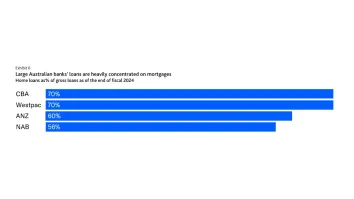
China’s banking "reforms" an illusion
China’s heavily hyped banking reforms look more like a gimmick than the real deal.
Foreign bankers remain skeptical about the alleged “reforms,” noting that barriers to capital entry remain tough and unchanged.
"The so-called reform doesn't include anything substantial," said Joe Zhang, head of Wansui Microloan Company, a microfinance firm based in Guangdong.
Other analysts noted that the bulk of the reform measures only reiterate existing rules, and that the criteria for private capital to buy into banks remain stringent.
One Chinese bank executive doesn’t think the introduction of private capital will boost the efficiency of the financial system as long as the government maintains a tight grip on interest rates and continues to impose administrative limits on bank lending.
The government last month unveiled measures allegedly aimed at encouraging more investment by private businesses in sectors traditionally dominated by the state such as banking.
The China Banking Regulatory Commission (CBRC) last month announced reforms that included allowing private firms to own more than 20% of a regional bank; permitting microfinancing firms to be restructured into banks and lowering entry barriers for establishing rural banks.
"The CBRC measures will do little to correct the fundamental problems in China's financial system, such as the (state) monopoly and the funding difficulties faced by small businesses," said Yi Xianrong, a researcher with the Institute of Finance and Banking under the Chinese Academy of Social Sciences.
The timing of the alleged reforms, which comes as China’s economy is rapidly weakening, leads some analysts and entrepreneurs to question if the government's real intention is to get private businesses to bail out state-owned banks and other troubled state enterprises.



















 Advertise
Advertise










